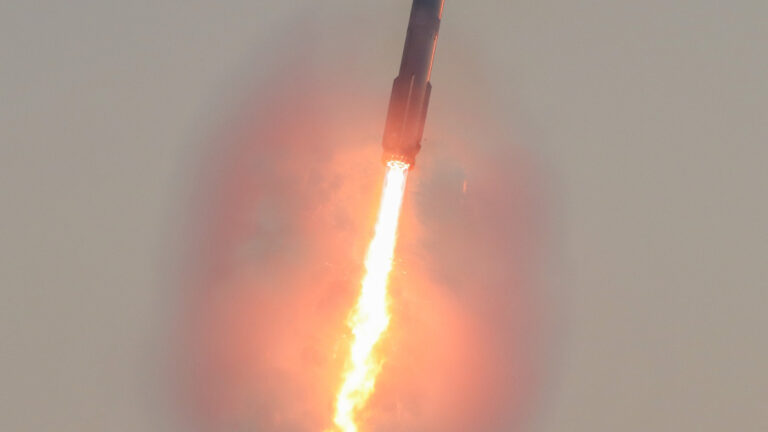
The engines switched off, and there it was. Many of the spectators lucky enough to be there jumped up and down with joy, hugged their friends, or let out an ecstatic yell. I snapped a few final photos and returned to his laptop, grinning, speechless, and started wondering how I could put this all into words.
Once the smoke cleared, at first glance, the rocket looked as good as new. There was no soot on the outside of the booster, as it is on the Falcon 9 rocket after returning from space. This is because the Super Heavy booster and Starship use cleaner-burning methane fuel instead of kerosene.
Elon Musk, SpaceX’s founder and CEO, later said the outer ring of engine nozzles on the bottom of the rocket showed signs of heating damage. This, he said, would be “easily addressed.”
What’s not so easy to address is how SpaceX can top this. A landing on the Moon or Mars? Sure, but realistically, those milestones are years off. There’s something that’ll happen before then.
Sometime soon, SpaceX will try to catch a Starship back at the launch pad at the end of an orbital flight. This will be an extraordinarily difficult feat, far exceeding the challenge of catching the Super Heavy booster.
Super Heavy only reaches a fraction of the altitude and speed of the Starship upper stage, and while the booster’s size and the catch method add degrees of difficulty, the rocket follows much the same up-and-down flight profile pioneered by the Falcon 9. Starship, on the other hand, will reenter the atmosphere from orbital velocity, streak through the sky surrounded by super-heated plasma, then shift itself into a horizontal orientation for a final descent SpaceX likes to call the “belly flop.”
In the last few seconds, Starship will reignite three of its engines, flip itself vertical, and come down for a precision landing. SpaceX demonstrated the ship could do this on the test flight last week, when the vehicle made a controlled on-target splashdown in the Indian Ocean after traveling halfway around the world from Texas.
If everything goes according to plan, SpaceX could be ready to try to catch a Starship for real next year. Stay tuned.